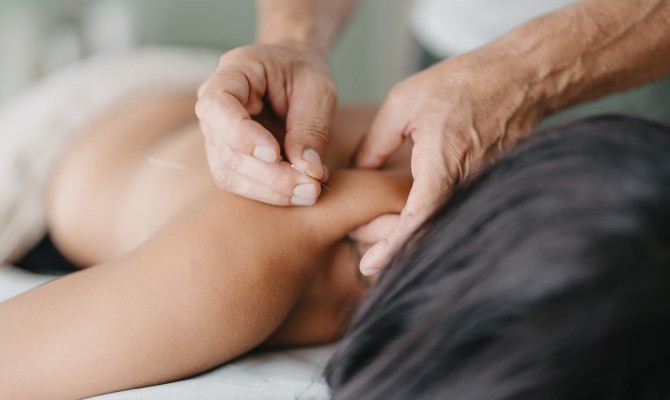Pain Management: How it works and who it helps
11 Sep 2025
24 Oct 2025

At its simplest, acupuncture is the use of very fine needles to help with pain, inflammation and healing.
There are two main styles:
Eastern (Traditional Chinese) acupuncture which is based on the flow of energy or “Qi” through channels called meridians.
Western acupuncture which is what most physiotherapists use. It focuses on stimulating nerves and dampening pain signals to the brain, as well as reducing inflammation and improving blood flow to an injured area.
Both approaches use similar points on the body, but the way they explain why they work is a little different.
When a needle is placed into the skin, it stimulates the nervous system. This can help with tight muscle release, reduce pain signals, release endorphins which are your body’s natural painkillers, and encourage better circulation and healing in the affected area.
For example, if someone comes in with tennis elbow, I might use acupuncture points around the elbow as well as on the hand or forearm that connect to the same channel. It is about encouraging the body to switch off pain signals and kick-start the healing process.
In physiotherapy, we mainly use acupuncture for pain and inflammation, including:
It can be especially useful in the early stages of an injury when massage or hands-on work might be too uncomfortable.
This is the question I get most often. The short answer is not really.
When the needle first goes in, you may feel a tiny prick, which is much less than having a blood test or injection. After that, most people describe a dull, heavy, or achy sensation rather than pain. That sensation means the needle is doing its job.
Points on the hands and feet can feel stronger than other areas, but overall it is very manageable. Many people even find acupuncture relaxing.
And yes, it is completely safe. At Habit Health, we only use sterile, single-use disposable needles.
A session starts with a chat. I will ask about your symptoms, medical history, and check for anything that might mean we avoid acupuncture, such as certain medications.
You will then get comfortable lying down, and I will explain exactly what we are doing and why. The needles are inserted gently using a small guide tube and left in place for around 10 to 15 minutes.
If it is your first time, I will usually keep it shorter to see how you respond. During that time, you just rest quietly and many people use it as an opportunity to relax.
Usually four or five per session, depending on the condition. Sometimes we focus just on the injured area, and other times I will use points further away on the same channel to help stimulate the effect.
It really depends on the person and the condition. For some, acupuncture works brilliantly after one or two sessions. Others might benefit from having it a few times across their treatment plan.
As physiotherapists, we often combine acupuncture with other treatments such as exercise, manual therapy or rehab programmes to get the best results.
It is worth mentioning that acupuncture is not the same as dry needling. Both use needles, but the techniques and reasoning are different.
Dry needling targets tight trigger points in muscles to release them quickly, while acupuncture works more broadly on pain relief and healing pathways.
At Habit Health, many of our physios are trained in both, so we can choose the right option depending on what your body needs.
Acupuncture is not for everyone, especially if you are not a fan of needles, but for many people, it can make a real difference. It is a safe, effective, and evidence-informed way to manage pain and support recovery. For a lot of patients, it is also surprisingly relaxing.
If you are curious about trying acupuncture, chat with your physiotherapist. You might find it becomes a valuable part of your recovery toolkit.
Habit Health has physiotherapists trained in acupuncture across the country.
Book an appointment online or call your local clinic to learn more.